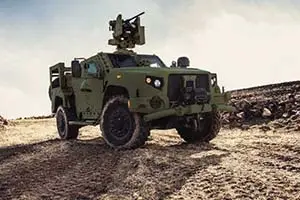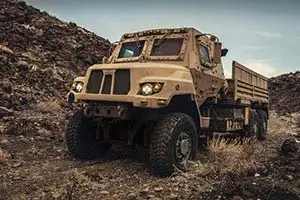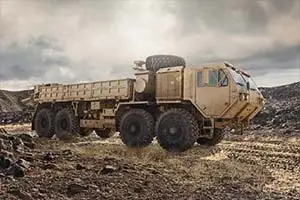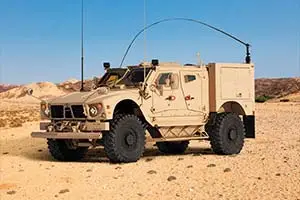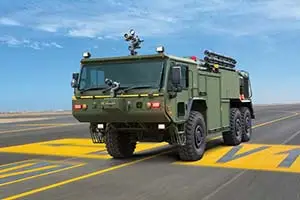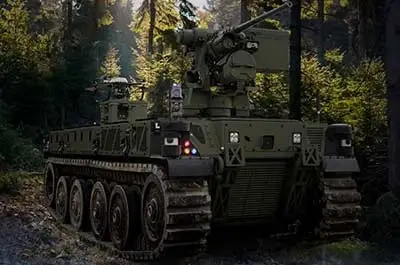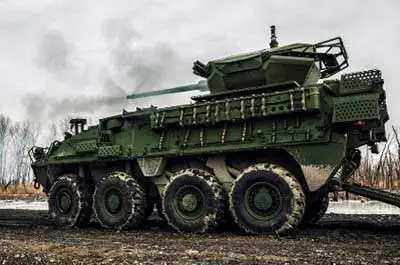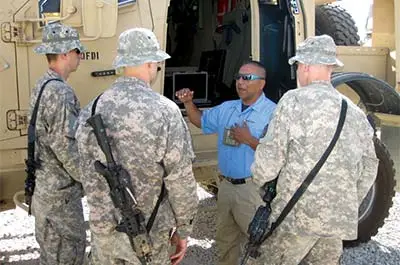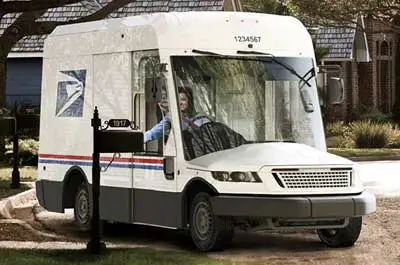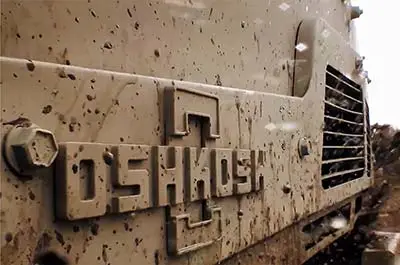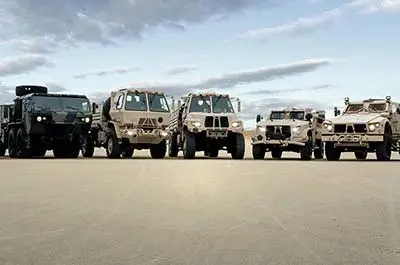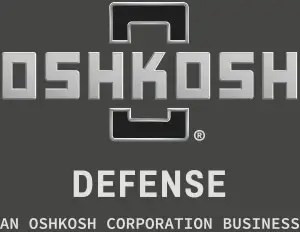Marines evaluate multiple Oshkosh TerraMax-equipped MTVRs in convoy operations
Oshkosh to present latest developments on the Cargo UGV initiative at AUVSI 2012
OSHKOSH, Wis. (Aug. 6, 2012) — Unmanned tactical wheeled vehicles that have the potential to serve as a force multiplier and reduce Warfighters’ exposure to lethal attacks continue to come closer to reality. The U.S. Marine Corps Warfighting Lab (MCWL) and Oshkosh Defense, a division of Oshkosh Corporation (NYSE:OSK), recently conducted the Marines’ first-ever training of multiple unmanned ground vehicles (UGV) in a single convoy using the Oshkosh TerraMax™ UGV technology. The Marines then evaluated the UGVs to determine how they can be utilized to support real-world “dull, dirty and dangerous” missions.
These most recent developments are a continuation of the MCWL’s Cargo UGV initiative, which uses Oshkosh Medium Tactical Vehicle Replacements (MTVR) equipped with the TerraMax UGV technology, and took place during the MCWL’s Enhanced MAGTF Operations (EMO) Limited Objective Experiment (LOE) 2.2, July 24 through Aug. 5 at Fort Pickett, Va. The EMO LOE 2.2 sought to evaluate technologies and capabilities being developed for future missions.
“Seven Marines were trained on our UGVs’ operations in only three days at the EMO LOE 2.2,” said John Beck, chief unmanned systems engineer for Oshkosh Corporation. “That’s a testament to the TerraMax technology’s ease of control and user-friendly design. The capabilities of our highly sophisticated UGV systems require minimal user intervention to complete their missions – opening the door for future logistics operations to be conducted with fewer Warfighters, reducing cost and saving lives.”
Combat-veteran Marines were trained on the Oshkosh UGV technology for the first time in August 2011 and also assessed it in a series of tests in challenging terrain and environments. Following that successful evaluation, Oshkosh delivered a second TerraMax-equipped MTVR earlier this year, and in June the government evaluated two Oshkosh UGVs operating in concert with a manned command-and-control vehicle. Several key tasks were accomplished, including:
- One operator supervised the operation of two unmanned MTVRs in convoy operations
- Vehicles operated successfully in complete blackout mode during night operations with no degradation in performance
- Vehicles navigated a wide range of terrain, including deep sand trails, clay roads with encroaching vegetation, two-track trails overgrown with grass and narrow creek crossings, and adjusted speeds to maintain proper intra-vehicle spacing
TerraMax UGV Technology
The Oshkosh TerraMax UGV technology is designed as a scalable kit. It can be integrated on new-production vehicles, including those built by other manufacturers, or retrofitted on existing vehicle fleets. Vehicles using the TerraMax technology can retain original payload and performance capabilities, and they can run planned missions in full autonomous mode or by “shadowing” a leader vehicle.
The TerraMax technology can function in the same weather conditions and operating environments as manned vehicles, requiring minimal human interaction and operator training. Oshkosh is teamed with the National Robotics Engineering Center of Carnegie Mellon University for perception system and autonomy software development.
The Cargo UGV project is sponsored by MCWL and the Joint Ground Robotics Enterprise Robotics Technology Consortium. Oshkosh received a contract for the Cargo UGV initiative in June 2010.
Oshkosh executives will be on hand to discuss the Cargo UGV initiative and the TerraMax technology at booth #4232 at AUVSI’s Unmanned Systems North America 2012.
About Oshkosh Defense
Oshkosh Defense, a division of Oshkosh Corporation, is an industry-leading global designer and manufacturer of tactical military trucks and armored wheeled vehicles, delivering a full product line of conventional and hybrid vehicles, advanced armor options, proprietary suspensions and vehicles with payloads that can exceed 70 tons. Oshkosh Defense provides a global service and supply network including full life-cycle support and remanufacturing, and its vehicles are recognized the world over for superior performance, reliability and protection. For more information, visit oshkoshdefense.com.
About Oshkosh Corporation
Oshkosh Corporation is a leading designer, manufacturer and marketer of a broad range of specialty access equipment, commercial, fire & emergency and military vehicles and vehicle bodies. Oshkosh Corporation manufactures, distributes and services products under the brands of Oshkosh®, JLG®, Pierce®, McNeilus®, Medtec®, Jerr-Dan®, Oshkosh Specialty Vehicles, Frontline™, SMIT™, CON-E-CO®, London® and IMT®. Oshkosh products are valued worldwide in businesses where high quality, superior performance, rugged reliability and long-term value are paramount. For more information, visit www.oshkoshcorporation.com.
®, TM All brand names referred to in this news release are trademarks of Oshkosh Corporation or its subsidiary companies.
Forward-Looking Statements
This press release contains statements that the Company believes to be “forward-looking statements” within the meaning of the Private Securities Litigation Reform Act of 1995. All statements other than statements of historical fact, including, without limitation, statements regarding the Company’s future financial position, business strategy, targets, projected sales, costs, earnings, capital expenditures, debt levels and cash flows, and plans and objectives of management for future operations, are forward-looking statements. When used in this press release, words such as “may,” “will,” “expect,” “intend,” “estimate,” “anticipate,” “believe,” “should,” “project” or “plan” or the negative thereof or variations thereon or similar terminology are generally intended to identify forward-looking statements. These forward-looking statements are not guarantees of future performance and are subject to risks, uncertainties, assumptions and other factors, some of which are beyond the Company’s control, which could cause actual results to differ materially from those expressed or implied by such forward-looking statements. These factors include the cyclical nature of the Company’s access equipment, commercial and fire & emergency markets, especially in the current environment where there are conflicting signs regarding the future global economic outlook; the expected level and timing of the U.S. Department of Defense (DoD) procurement of products and services and funding thereof; risks related to reductions in government expenditures in light of U.S. defense budget pressures and an uncertain DoD tactical wheeled vehicle strategy; risks that profit on the definitization of contracts with the DoD could differ from the Company’s estimates; increasing commodity and other raw material costs, particularly in a sustained economic recovery; the ability to increase prices to raise margins or offset higher input costs; risks related to the Company’s exit from its ambulance and European mobile medical businesses, including the amounts of related costs and charges; risks related to facilities consolidation and alignment, including the amounts of related costs and charges and that anticipated cost savings may not be achieved; the Company’s ability to produce vehicles under the FMTV contract at targeted margins; the duration of the ongoing global economic weakness, which could lead to additional impairment charges related to many of the Company’s intangible assets and/or a slower recovery in the Company’s cyclical businesses than Company or equity market expectations; the potential for the U.S. government to competitively bid the Company’s Army and Marine Corps contracts; the consequences of financial leverage, which could limit the Company’s ability to pursue various opportunities; risks related to the collectability of receivables, particularly for those businesses with exposure to construction markets; the cost of any warranty campaigns related to the Company’s products; risks related to production or shipment delays arising from quality or production issues; risks associated with international operations and sales, including foreign currency fluctuations and compliance with the Foreign Corrupt Practices Act; risks related to actions of activist shareholders; and the Company’s ability to successfully execute on its strategic road map and meet its long-term financial goals. Additional information concerning these and other factors is contained in the Company’s filings with the Securities and Exchange Commission. The Company assumes no obligation, and disclaims any obligation, to update information contained in this press release. Investors should be aware that the Company may not update such information until the Company’s next quarterly earnings conference call, if at all.
